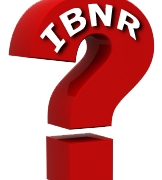Explaining IBNR to the Board
“What is IBNR” is likely the most asked question of actuaries at a Board of Directors meeting. Huggins’ actuaries often are asked the question, so we decided to put together this short, printable explanation. Even if you already understand IBNR, this short narrative might enable you to save some time. Feel free to share it with others, including your Board of Directors.
Like most companies, insurance companies are required to hold liabilities on their books for the unpaid costs of claims that have occurred as of the accounting date. Unlike other companies, there are claims that have not been finalized, and some claims that have not even been presented to the company. Statutory accounting requires the insurer reflect the amount the insurer expects to pay for losses incurred but not yet reported or reported claims that have not yet been paid as of the accounting date.
Because an ultimate value of the claim and claim expenses liabilities cannot be precisely determined in advance, the provisions for them at any balance sheet date is usually estimated or tested using actuarial and statistical techniques.
Usually, most of the claims reserve is in the form of claims adjuster estimates. The total of all the claim adjusters’ reserves is referred to as the case reserve. But as of the accounting date, not all the information regarding all the claims has been presented to the claim adjusters. There needs to be an estimate of the value of the cost of the “unknown” information on claims being adjusted. Some call it “Incurred But Not Enough (information) Reported, or IBNER, to represent the cost of additional unknown information on known claims.
For known outstanding claims, the IBNER can be calculated as the difference between the current case reserve and the estimate amount ultimately needed to settle the reported claims (provision for future development on known claims), including payments post closure for reopened claims.
As of an accounting date, not all the claims have been presented to the insurance company. These “unknown” claims are still costs as of the accounting date, and need to be reflected. Some sources call this “Incurred But Not Yet Reported” claim costs, or IBNYR. For unreported claims, the IBNYR is sometimes separately calculated.
Often, the IBNER and IBNYR amounts are calculated together, and are referred to combined as IBNR, which stands for “Incurred But Not Reported,” and refers to estimates of the both IBNER and IBNYR.
As a group of claims age, more claims are settled and paid, more information becomes known, and more previously unreported claims are reported; thus, the need for IBNR diminishes. Therefore, the amount of IBNR for a given accident year generally decreases over time. The declines for all prior years are often more than compensated for by the IBNR needed for the new accident period, and thus overall IBNR increases.
Please contact the author for more information:
Grover M. Edie, MBA, FCAS, MAAA, CPCU, ARP, CERA, ARM
grover.edie@hugginsactuarial.com



